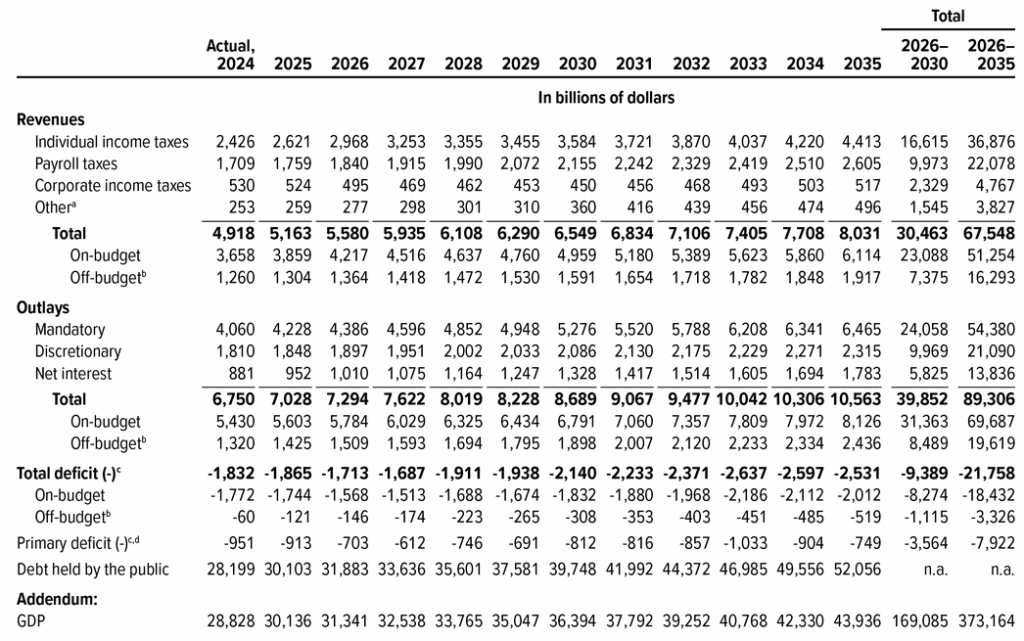It is time for Washington Republicans to unite behind the one big, beautiful economic plan that will: 1) Generate $36.568 billion federal budget surpluses (2026-2030); 2) Eliminate massive amounts of Household Debt and restore financial security for millions of hard-working, tax-paying American families; 3) Revitalize long-term economic growth in the U.S.; 4) Restore economic liberty and free market economics.
And it is time to stop the ‘cat-fights.’
………………………………….
The Day After: Trump ‘Not Interested’ In Talking As Musk Continues To Make Case Against BBB
ZeroHedge, Jun 06, 2025 – Excerpts:
After Thursday’s grand meltdown between Elon Musk and President Donald Trump over the Big Beautiful Bill, it looked like things were set to simmer down – with Musk posting several things on X that suggested he was open to a path forward, while the Trump White House had scheduled a call with Musk, Politico reported.
On Friday morning, however, it was clear that Trump isn’t ready to mend fences – he doesn’t want to talk to Musk, and is looking to sell his Tesla – while Musk spent the morning (so far) making clear that Congress needs to fix government spending or America is going to be in a world of hurt.
“I’m not even thinking about Elon. He’s got a problem. The poor guy’s got a problem,” Trump told CNN in a brief phone call. When asked if he had a call with Musk, Trump replied “No. I won’t be speaking to him for a while I guess, but I wish him well.”
While two attorneys associated with the Epstein case(s) flatly denied Trump had anything to do with Epstein’s sex-trafficking operation.
On Friday, Musk re-posted the following posts and clips making his case;
While Trump (as noted above) isn’t ready to have a phone call with Musk to hash things out.
Meanwhile, DOGE chief architect Joel Fishback slammed Musk and said he’s stepping away from the effort following Musk’s comments, Politico reports.
“The truth is that Elon set expectations that he relayed to the president, me, and the country that he did not come close to fulfilling. That’s disappointing, but okay,” said Fishback. “What’s not okay is his baseless personal attacks against President Trump.”
_________________________________
The Leviticus 25 Plan economic scoring – first five years of activation (2026-2030):
The Leviticus 25 Plan will generate average annual budget surpluses of $36.568 billion vs current CBO-projected average annual deficits of $1.938 trillion for the same period.
This represents a monumental $2.304 trillion positive budget gain annually (2026-2030) for the U.S. federal budget.
……………………………………….…..

Scoring Update Summary:
The Leviticus 25 Plan budget surplus
Totals – 2026-2030:
5-year projected deficit (CBO): $9.691 trillion
5-year projected recapture (subtotal): $9.759 trillion
5-year projected interest expense savings: $114.839 billion
Budget surplus (projected) 2026-2030:
$9.832 trillion – $9.691 trillion = $68.0 billion
Budget surplus (projected) 2026-2030 with interest expense savings:
$68.0 billion + $114.839 billion = $182.839 billion
Average annual budget surplus (projected) 2026-2030: $182.839 billion / 5 years: $36.568 billion per year
…………………….
Summary Details:
Note 1: Projected budget surpluses for 2026-2030 do not factor in the additional government tax revenue gains that would accrue from the massive shift in capital away from debt service and into productive economic activity.
Note 2: Projected budget surpluses for 2026-2030 do not factor in the additional government tax revenue gains that would accrue from significantly lower levels of debt deductibility on individual income tax filings.
Note 3: Projected budget surpluses from the Medicaid / CHIP recapture do not take into account the likelihood of fewer citizens actually qualifying for Medicaid / CHIP benefits.
Note 4: Projected budget surpluses from Interest Expense Reductions during each of the first five years of activation (2026-2030) is likely understated due to the fact that ‘debt held by the public’ is projected to increase by 8.5% per year, from $28.278 trillion in 2026 to $40.198 trillion in 2030.
Note 5: The Plan’s funding of individual Medical Savings Accounts (MSAs) with the $6,000 deductible provision per year would result in an enormous drop in the number of claims each year for Medicare reimbursement. Medicare payroll taxes would generate a growing revenue stream, due to stronger economic growth, while outlays would drop significantly from the reduced claims numbers – thereby providing the Fed with a powerful tool to recapitalize the Medicare Trust Fund, vis the Citizen’s Credit Facility.
The Leviticus 25 Plan 2026 – An Economic Acceleration Plan for America
$90,000 per U.S. citizen – Leviticus 25 Plan 2026 (30361 downloads )







